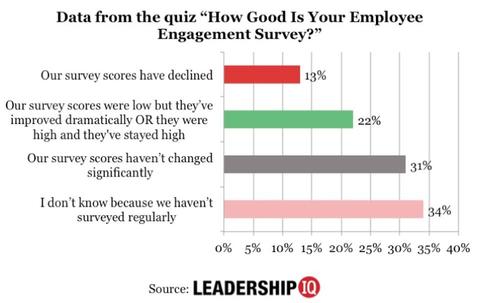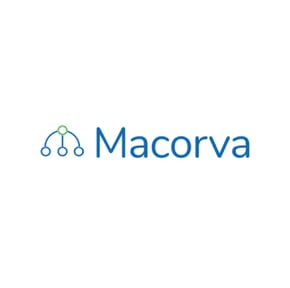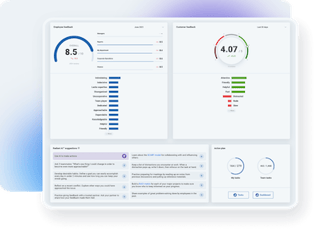
Employee Wellness and Well-Being: 5 Key Trends for 2021
Employee wellness is a rapidly advancing area of focus for employers thanks to a growing body of research linking employees' physical and mental well-being to business performance. Wellness programs have been shown to increase productivity, improve performance, boost employee engagement and morale, and reduce costs related to healthcare and absenteeism:
Combined research from University of California, Riverside, UCLA, and Washington University found that employees participating in wellness programs gained an additional workday’s worth of productivity each month1
A recent meta-analysis on the cost savings of employee wellness programs found that each dollar spent on wellness programs saved $3.27 in healthcare costs and $2.73 in absenteeism costs, on average.2
As the benefits of investing in employee wellness become more apparent, more employers are allocating resources to build programs for employee wellness and well-being. Grandview Research’s market analysis predicts the US Corporate Wellness Market will grow to $87 billion by 2027 - a 67% increase from 2020 ($52 billion).3
The employee wellness industry is not just expanding quickly - it’s also adapting to new findings and the changing behavior of employees. Here are 5 key trends shaping the employee wellness and well-being landscape:
1. Employee wellness as a driver of engagement
The concept of employee engagement has dominated conversations about employee experience throughout the last decade. Defined as the level of commitment employees feel for the companies where they work, engagement is a relatively simple metric for predicting long-term success in key areas of business like sales, customer satisfaction, and employee retention.
The thesis of engagement is simple, but profound:
Businesses with committed (engaged) employees will outperform similar businesses with disengaged employees because engaged employees will care more about helping the business succeed.
The link between employee engagement and business outcomes has been documented extensively. Engaged employees demonstrate greater levels of commitment, produce higher quality work, and better engage with customers compared to their disengaged counterparts. Companies with highly engaged employees experience 7x greater total shareholder returns than companies with disengaged employees.5 As a result, business leaders are highly motivated to maximize engagement among their employees.
The employee engagement ROI
While the benefits of an engaged workforce are well-established, the benefits of investing in employee engagement programs are less defined. LeadershipIQ research from over 3,000 HR executives across the globe found that only 1 in 5 companies measuring engagement saw an improvement in their results:6

These findings suggest that measuring and tracking employee engagement does not actually influence engagement trends. While most employee engagement market solutions remain focused on measuring and tracking engagement levels, practitioners are learning that the devil is in the details: better engagement doesn’t come from measuring engagement, but from investing in and improving the employee experience.
The employee experience is heavily influenced by the mental and physical well-being of employees. Given the growing body of research linking employee well-being to job satisfaction and engagement, many employers with goals to increase employee engagement are focusing their immediate efforts on employee wellness programs.
2. Emphasis on managing work-related stress
Historically, employee wellness programs have focused mainly on physical health and wellness. The most common wellness initiatives in place today provide resources and support to help employees make high-impact lifestyle changes like eliminating tobacco use, exercising regularly, and eating a healthy, balanced diet. These initiatives can be a relatively easy sell to employers due to the strong links between these lifestyle changes and staving off chronic illness. When employees are less chronically ill, employers spend less money on healthcare and absenteeism related costs.
Just as research in the 20th century revealed the influences of diet, exercise, and tobacco use on health, research in the 21st century is revealing the profound influence of stress and mental health on overall health and well-being. Stress negatively impacts virtually every system within the body. Higher levels of stress have been linked to cardiovascular problems, decreased immune function, lower mobility, chronic pain, and mental illness.
The effects of stress are pervasive not just within the body but also within the population. For context, in the United States, 14% of adults are current smokers. 18% are severely obese.
43% suffer adverse health effects from stress.7
For many people, these adverse effects stem directly from work-related stress. 80% of employees feel stressed on the job, and nearly half say they need help learning how to manage stress.8 As the link between stress and well-being becomes more apparent, managing work-related stress should become a focal point in employer wellness programs.
3. Mental health and holistic well-being
Another trend shaping the employee wellness landscape is rising awareness of mental health and its influence on employee well-being and performance. The World Health Organization estimates that depression and anxiety costs the global economy US$ 1 trillion per year in lost productivity.9 Increased awareness and de-stigmatization of these mental illnesses has created an opportunity for employers to help employees and regain lost productivity.
Employer investments in mental health and well-being also have widespread impact due to the strong link between mental and physical health. Employees with greater mental well-being are less likely to experience chronic illness or engage in harmful habits. For example, CDC data reports that adults with severe anxiety are three times more likely to be current smokers than adults with no or minimal anxiety.10
As employers process the link between mental and physical well-being, wellness programs are increasingly less oriented around physical health and shifting toward a more holistic approach to employee well-being that includes support for both physical and mental health.
4. Growing demand for employer wellness programs
For most employees, work will be a primary source of stress. As employees have become more aware of how stress impacts their mental and physical health, demand has picked up for resources and support to help manage the stress their jobs bring. The Virgin HealthMiles/Workforce survey found that 87% of employees consider health and wellness offerings when choosing an employer.11
This increase in demand is evident in the rising levels of participation in employer wellness programs and employees’ responses to these programs:
70% of employees enrolled in wellness programs have reported higher job satisfaction than those not enrolled in the companies’ program.12
77% of employees think that workplace wellness programs positively impact the company culture.13
5. Measuring ROI for wellness and well-being programs
As the demand for employer wellness programs grows, a primary concern for employers is the return on investment (ROI) of these programs, particularly as the scope of these programs expands to uncharted territory like stress and mental health.
Traditionally, the ROI of wellness programs has focused primarily on reductions in healthcare-related spending and lower rates of absenteeism, two metrics most affected by reductions in chronic illness.
Sixty percent of respondents reported that workplace wellness programs reduced their organization’s health care costs.14
For every dollar spent on wellness programs the company saves $5.82 in lower employee absenteeism costs.15
But as wellness programs evolve from a primary focus on physical health to a more holistic approach, their ROI can be measured by broader financial gains stemming from increased productivity and higher levels of employee engagement:
63% of employers offering wellness programs reported increased financial sustainability and growth.16
Companies with highly effective health and wellness plans are 40% more likely to report better financial performance than low-effectiveness companies.17
Organizations with highly effective health and productivity programs report 11% higher revenue per employee and 28% greater shareholder returns.18
A meta-analysis of 339 independent research studies measuring the well-being of 1.8 million employees found a significant relationship between employee well-being and business performance. They concluded, “Ultimately, higher well-being at work is positively correlated with more business-unit profitability.”19
-
Employer wellness programs are growing in popularity as awareness builds around the link between employee well-being and business performance. Employee wellness is expected to become a top priority for many businesses looking to improve employee experience and engagement, reduce costs, and increase profits.
Employee wellness and well-being webcast
Join Macorva CEO Carley Childress for an informative overview of market trends and best practices for employee wellness and well-being programs. This webcast will cover:
- developing trends driving the employee wellness market
- key findings on the links between stress, mental health, and overall wellness
- best practices on using employee feedback to guide program development
- determining the return on investment (ROI) of wellness and well-being programs
--
About us
Macorva was founded in 2018 by product developers Nathan and Carley Childress, who saw an opportunity to improve business outcomes by bridging the gap between feedback and action left by conventional survey tools. Macorva closes this gap with frictionless feedback experiences and empowers action at every level to improve business performance, employee engagement, and customer satisfaction.
References
1https://www.sciencedaily.com/releases/2017/08/170802134738.htm
2https://www.shrm.org/ResourcesAndTools/hr-topics/benefits/Documents/2010-Harvard-Wellness-Program-Meta-Study-Health-Affairs.pdf
3https://www.grandviewresearch.com/industry-analysis/corporate-wellness-market
4https://www.forbes.com/sites/kevinkruse/2014/01/07/employee-engagement-the-wonder-drug-for-customer-satisfaction/?sh=17e881b96d46
5https://www.forbes.com/sites/kevinkruse/2012/09/04/why-employee-engagement/?sh=3d1fc513aab4
6https://www.leadershipiq.com/blogs/leadershipiq/only-22-of-companies-are-getting-good-results-from-their-employee-engagement-survey
7https://www.piedmont.org/living-better/infographic-how-stress-affects-the-body
8https://www.stress.org/workplace-stress
9https://www.who.int/teams/mental-health-and-substance-use/mental-health-in-the-workplace
10https://www.cdc.gov/tobacco/data_statistics/fact_sheets/adult_data/cig_smoking/index.htm
11https://www.forbes.com/sites/work-in-progress/2013/06/11/challenge-2013-linking-employee-wellness-morale-and-the-bottom-line/?sh=1b50c99f5ca2
12https://www.aflac.com/business/resources/aflac-workforces-report/default.aspx
13https://www.forbes.com/sites/work-in-progress/2013/06/11/challenge-2013-linking-employee-wellness-morale-and-the-bottom-line/#3709a8b35ca2
14https://www.uschamber.com/sites/default/files/022436_labr_wellness_report_opt.pdf
15https://www.in.gov/isdh/files/WellnessArticleRx.pdf
16https://www.ifebp.org/bookstore/workplacewellness/Pages/default.aspx
17https://www.sunlife.ca/static/canada/Sponsor/About%20Group%20Benefits/Group%20benefits%20products%20and%20services/The%20Conversation/Bright%20Papers/files/1748-03-12-e.pdf
18https://www.sunlife.ca/static/canada/Sponsor/About%20Group%20Benefits/Group%20benefits%20products%20and%20services/The%20Conversation/Bright%20Papers/files/1748-03-12-e.pdf
19https://ideas.repec.org/p/cep/cepdps/dp1605.html





